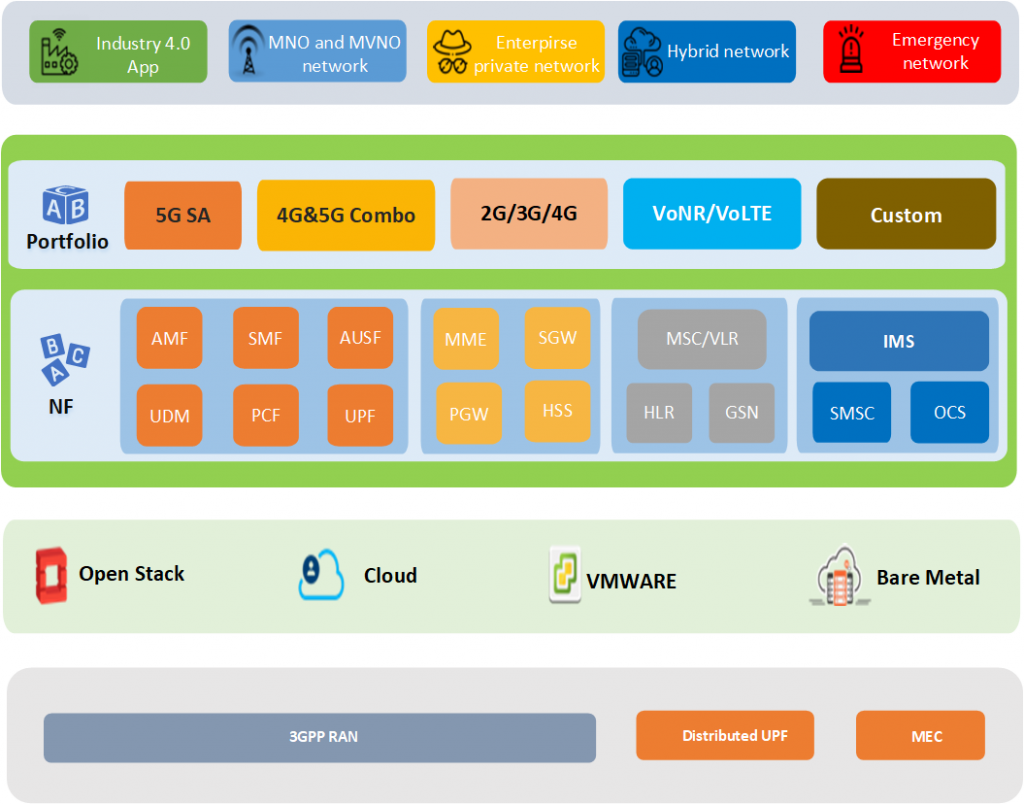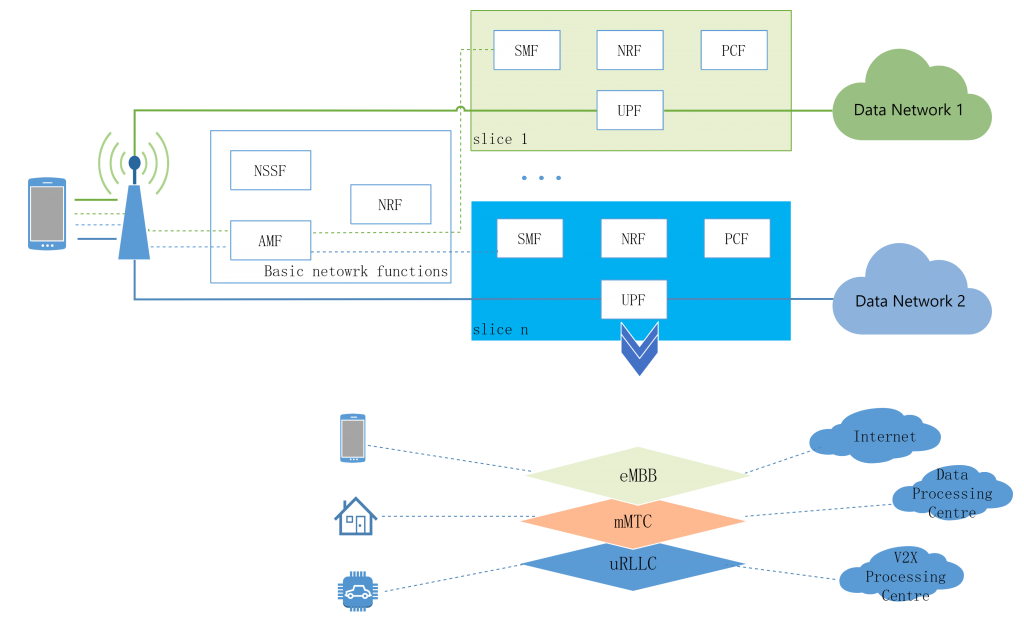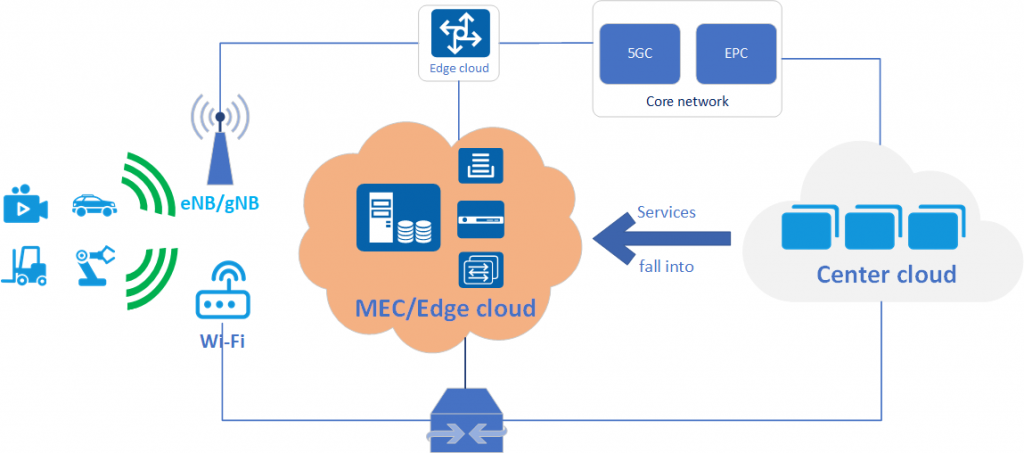3 types of application scenarios

eMBB
(Enhanced Mobile BroadBand)
With 5G support, users can easily enjoy online 4k/8k video, VR/AR experience and cloud gaming, with user experience rates up to 1Gbps and peak speeds of up to 10Gbps.

mMTC
(Massive Machine Type Communication)
Realize massive IoT, 5G’spowerful connection capabilities can quickly promote the deep integration of various vertical industries such as smart cities, smart homes, environmental monitoring, etc.

uRLLC
(Ultra-Reliable Low Latency Communication)
The connection delay reaches the level of 1ms, and it supports high-reliability (99.999%) connections under high-speed movement (500KM/H). This scenario is more for special applications such as the Internet of Vehicles, industrial control, and telemedicine.
9 typical business use cases
eMBB Use Cases

HD live video

Smart cloud office

VR/AR experience
mMTC Use Cases

Smart Cities

Smart homes

Smart agriculture
uRLLC Use Cases

Internet of Vehicles

Smart Industrial manufacturing

Smart medical
3 key technologies
Cloud-Native
5G’s cloud-native architecture, flexible componentization to meet the needs of multiple services. The core network adopts the NFV cloud native architecture, which breaks the boundaries of network functions. The NFs are split into fine-grained micro-service components, and its can be quickly built-in building blocks as needed.
The cloud-native solutions, SDN/NFV network software technology, can provide features such as programmable, flexibility, and modularity. By combining with network slicing technology and MEC technology, multiple customized logical virtual networks can be established on the public network to achieve the customization of network services, on-demand network services, and automation of network deployment and operation and maintenance will bring more possibilities for operators to expand their 5G business.


Network Slicing
The 5G network is an Internet of Everything. Different users in different industries have different application scenarios and performance requirements. A single network architecture cannot meet the various specific aspects of latency, scalability, availability, and reliability of vertical industry services. To solve this problem, NGMN first proposed the concept of network slicing.
Network slicing enables operators to define network resource capabilities in shards and provide various levels of services for different users. Network slicing is an independent logical network running on a shared physical facility, complying with the SLA (Services Level Agreement) of different industries and customers. To achieve this goal, network slicing needs to provide end-to-end services, including access networks, transmission networks, and core networks.
Multi-Access Edge Computing
MEC (Multi-Access Edge Computing), proposed by ETSI, is a technology based on the 5G evolution architecture that deeply integrates mobile access networks and Internet services. MEC can use the wireless access network to provide services and cloud computing functions for nearby telecommunication users.
MEC is based on edge network + computing resources, providing a building block combination of connections, computing, capabilities, and applications to provide users with nearby services and enhance consumers’ high-quality network experience.

6 key benefits

Open network
Meet the standard protocol architecture, support multiple services, heterogeneous hardware, and support mixed networking of different vendors.

Infrastructure standardization
The IT-based physical equipment is standardized, and the server supports standard x86 and arm platforms, effectively reducing hardware procurement costs and maintenance costs.

Efficient, flexible, and elastic scaling
The network capacity can be flexibly expanded, flexible and efficient in deployment, and quickly launched to ensure the efficiency of network operations.

Collaborative cloud
The edge platform realizes the business cooperation between the central cloud and the edge nodes, aggregates the ecology, attracts the cloud to the network, and quickly realizes edge business innovation.

Smooth evolution
The 5G network supports SA and NSA networking modes, and supports 4G network evolution. At the same time, with the continuous improvement of protocol standards, the network evolves smoothly, and functions are continuously enhanced.

Fast business iteration
The new micro-service cloud-based architecture realizes the delivery and innovation of business express delivery, and shortens the product business listing cycle.
AgrandTech 5G related products

5GC
5G core network products, with a new cloud-based architecture, to meet the needs of Industry 4.0 and the Internet of Everything
MEC
Multi-access edge computing (MEC) is a technology based on 5G evolution architecture that deeply integrates mobile access networks and Internet services

Signaling Gateway
Signaling is a transmission protocol used by mobile communication networks to control communication between different elements. The signaling gateway acts as a bridge for signaling transmission.
AgrandTech 5G related solutions

Private Network
Suitable for various industries such as factories, parks, mining areas, etc.
Support multiple networking modes

MEC Solution
The MEC platform sinks the central cloud service capabilities to edge cloud, improve response bandwidth and large-capacity access




